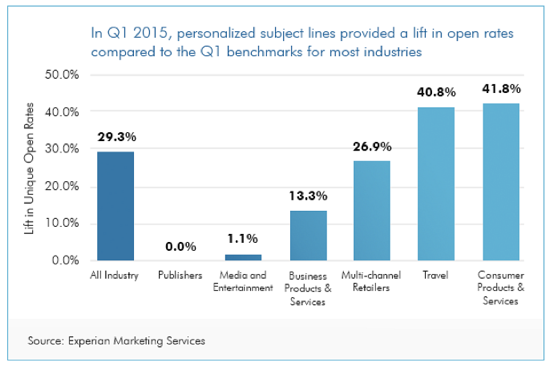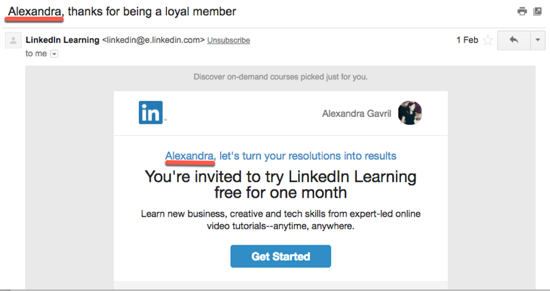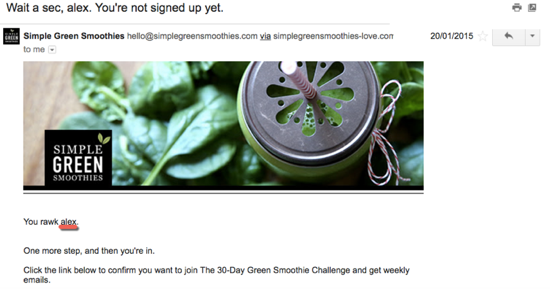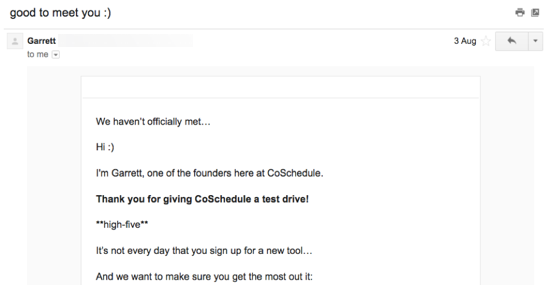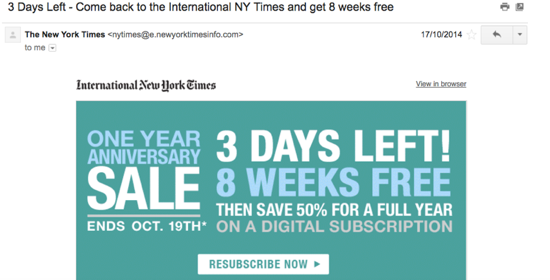Six email personalisation tactics that boost open rates and revenue
According to a study by VentureBeat, email is still the number one channel with the highest return on investment. But if you’re sending campaigns that aren’t targeted directly at your subscribers, then the chances of them clicking through to your site and making a purchase are slim.
That’s where personalisation comes in. Studies show that using personalisation to make emails more relevant to subscribers are getting a 2.5x higher click-through rate and generating 6x more sales than generic, one-size-fits-all offers and messaging campaigns.
Want to know which areas of your email you can personalise to make your campaigns more effective and increase your revenue?
Let’s start with these six personalisation tactics that you can implement today:
Segment your mailing list
While personalisation may feel like a time-consuming chore, it doesn’t have to be when you have the right marketing tools in place to do some of the work for you.
For example, one of the most effective ways to send hyper-relevant emails to your subscribers is by first segmenting your list. This means creating different lists that enable you to send content that’s targeted directly at each specific group depending on where they are in the purchasing journey.
Think about it – different subscribers need different things from you. Some may be in the research phase, wanting to learn more about you and your products or services, and whether they can trust your expertise to help solve their problem. Others may have already purchased from you but need further assistance to make the most of their purchase.
When you’re segmenting your list you can send each group the information and type of content that they’re interested in.
A good email marketing tool should make this easy to do.
Personalise the “From Name”
For most people, the From Name is critical when deciding whether to open or to bin an email. So make sure you personalise the From Name to ensure your subscribers quickly identify who the email is from.
As a small business, this is something you want to take advantage as it enables you to build trust and also get instantly recognised in the inbox.
For example, if you’re a freelancer or if you run a small web design agency, you could personalise your From Name to say “Mike from DesignStudio” instead of the generic and formal “Mike Patterson”.
Here’s an example from Tuesday:
Add the subscriber’s name in the subject line
Want to improve your open rates? Personalise your subject line. How? Start by adding the subscriber’s name to the subject line.
Why does this work? Because, as Dale Carnegie puts it, “a person’s name is to that person the sweetest and most important sound in any language”.
In fact, Experian found that a personalised subject line increased open rates by 29.3% across all industries.
Consumers today expect their interactions with a brand to be valuable and personally relevant. So by simply recognising and mentioning a subscriber’s name in the subject line you can create an immediately personal connection with that subscriber.
Check out this example from Dropbox:
Now, don’t think of personalised subject lines as only including a subscriber’s name. You can use other data as well, such as their location, job role or personal interests.
The only way you can determine what works best for you subscribers is by trying it out and experimenting with your subject lines.
Add their name to the email copy
You can go even further by including the recipient’s name in the email content too, like in these examples from LinkedIn
and from Simple Green Smoothies:
Play with imagery
Beyond just text, you can also change the images in your emails to better appeal to specific groups of subscribers.
So, for example, if you’re selling internationally you can use different images to match the subscribers’ location. Or if you’re targeting women or men only, you can use relevant images to match their gender.
Send behaviour-triggered emails
Sending emails based on a subscriber’s behaviour ensures that you remain relevant with where they are in their customer journey. This is where the marketing automation feature in our 123 Reg email marketing tool makes your life easier as it enables you to send the right emails to the right subscribers at the right time.
A common behaviour-triggered email is the Welcome email. This acts as a warm greeting that confirms their subscription to your mailing list, plus information on what to do next, like “check out these super useful guides” or “read these articles”.
Here’s an example from CoSchedule:
Another one is the follow up email that’s also used when users add products to their shopping cart but abandon and don’t purchase the products. If you’ve ever received an email reminding you to complete your purchase, that’s an automatically generated email, which you can also set up with the 123 Reg email marketing tool.
Another good one is the post-purchase email where you send follow-up information like receipts, shipping information, and useful resources to help them make the most of the product they just purchased.
You can also send birthday offers, subscription renewals or emails that are meant to re-engage customers who haven’t read your emails, logged into their accounts or purchased from you in a while.
Check out this example from The New York Times:
These behaviour-trigger emails are super important, especially because they catch a subscriber at the right time, so they’re more likely to open your email and click through.
How do you get the necessary subscriber data?
Collecting the right data about your subscribers is the first step to email personalisation and sending hyper relevant campaigns.
One of the easiest ways to do this is through your contact or signup forms when someone wants to get in touch with you or to receive your newsletters.
So if you want to send targeted emails that include subscribers’ first names or location, then ask for that information in your form. And if your goal is to send personalised emails based on a subscriber’s job or income, then add those fields to your form.
Now, as you optimise your form for email personalisation, avoid asking for too much information. A long form with too many fields can be overwhelming and can create a barrier that could prevent people from joining your mailing list.
If you need help finding a good balance, read our beginner’s guide to creating contact forms where we explain what makes a solid contact form and how to optimise it to entice more people to fill it out.
Want to find out more about email marketing and how to make the most of it? Then take our free course on email marketing and we’ll teach you how to use this powerful channel to grow and engage your customers and boost your revenue.
Wrapping up
There are lots of ways in which you can personalise your emails and better connect with subscribers. We encourage you to try out the above tactics in your next campaigns, and see which one gets you the best results.


